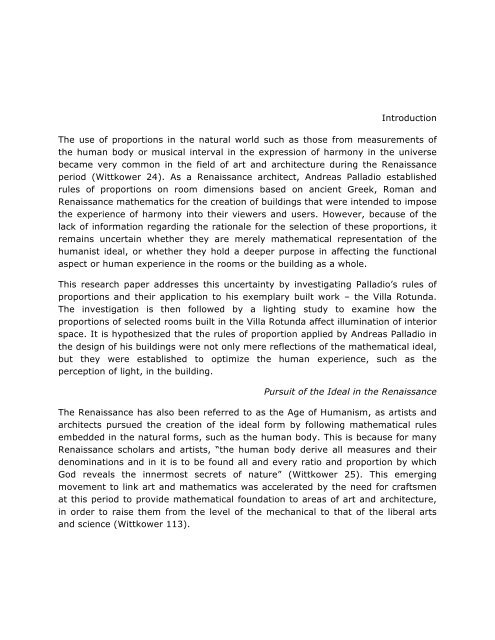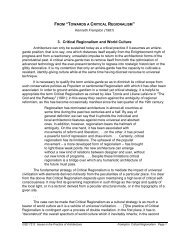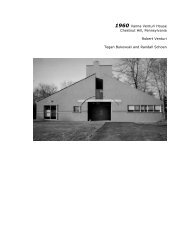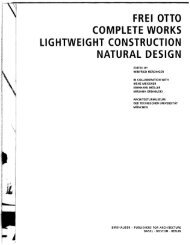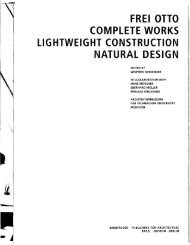Raymond Chau and Ruogu Liu
Raymond Chau and Ruogu Liu
Raymond Chau and Ruogu Liu
You also want an ePaper? Increase the reach of your titles
YUMPU automatically turns print PDFs into web optimized ePapers that Google loves.
Introduction<br />
The use of proportions in the natural world such as those from measurements of<br />
the human body or musical interval in the expression of harmony in the universe<br />
became very common in the field of art <strong>and</strong> architecture during the Renaissance<br />
period (Wittkower 24). As a Renaissance architect, Andreas Palladio established<br />
rules of proportions on room dimensions based on ancient Greek, Roman <strong>and</strong><br />
Renaissance mathematics for the creation of buildings that were intended to impose<br />
the experience of harmony into their viewers <strong>and</strong> users. However, because of the<br />
lack of information regarding the rationale for the selection of these proportions, it<br />
remains uncertain whether they are merely mathematical representation of the<br />
humanist ideal, or whether they hold a deeper purpose in affecting the functional<br />
aspect or human experience in the rooms or the building as a whole.<br />
This research paper addresses this uncertainty by investigating Palladio’s rules of<br />
proportions <strong>and</strong> their application to his exemplary built work – the Villa Rotunda.<br />
The investigation is then followed by a lighting study to examine how the<br />
proportions of selected rooms built in the Villa Rotunda affect illumination of interior<br />
space. It is hypothesized that the rules of proportion applied by Andreas Palladio in<br />
the design of his buildings were not only mere reflections of the mathematical ideal,<br />
but they were established to optimize the human experience, such as the<br />
perception of light, in the building.<br />
Pursuit of the Ideal in the Renaissance<br />
The Renaissance has also been referred to as the Age of Humanism, as artists <strong>and</strong><br />
architects pursued the creation of the ideal form by following mathematical rules<br />
embedded in the natural forms, such as the human body. This is because for many<br />
Renaissance scholars <strong>and</strong> artists, “the human body derive all measures <strong>and</strong> their<br />
denominations <strong>and</strong> in it is to be found all <strong>and</strong> every ratio <strong>and</strong> proportion by which<br />
God reveals the innermost secrets of nature” (Wittkower 25). This emerging<br />
movement to link art <strong>and</strong> mathematics was accelerated by the need for craftsmen<br />
at this period to provide mathematical foundation to areas of art <strong>and</strong> architecture,<br />
in order to raise them from the level of the mechanical to that of the liberal arts<br />
<strong>and</strong> science (Wittkower 113).


